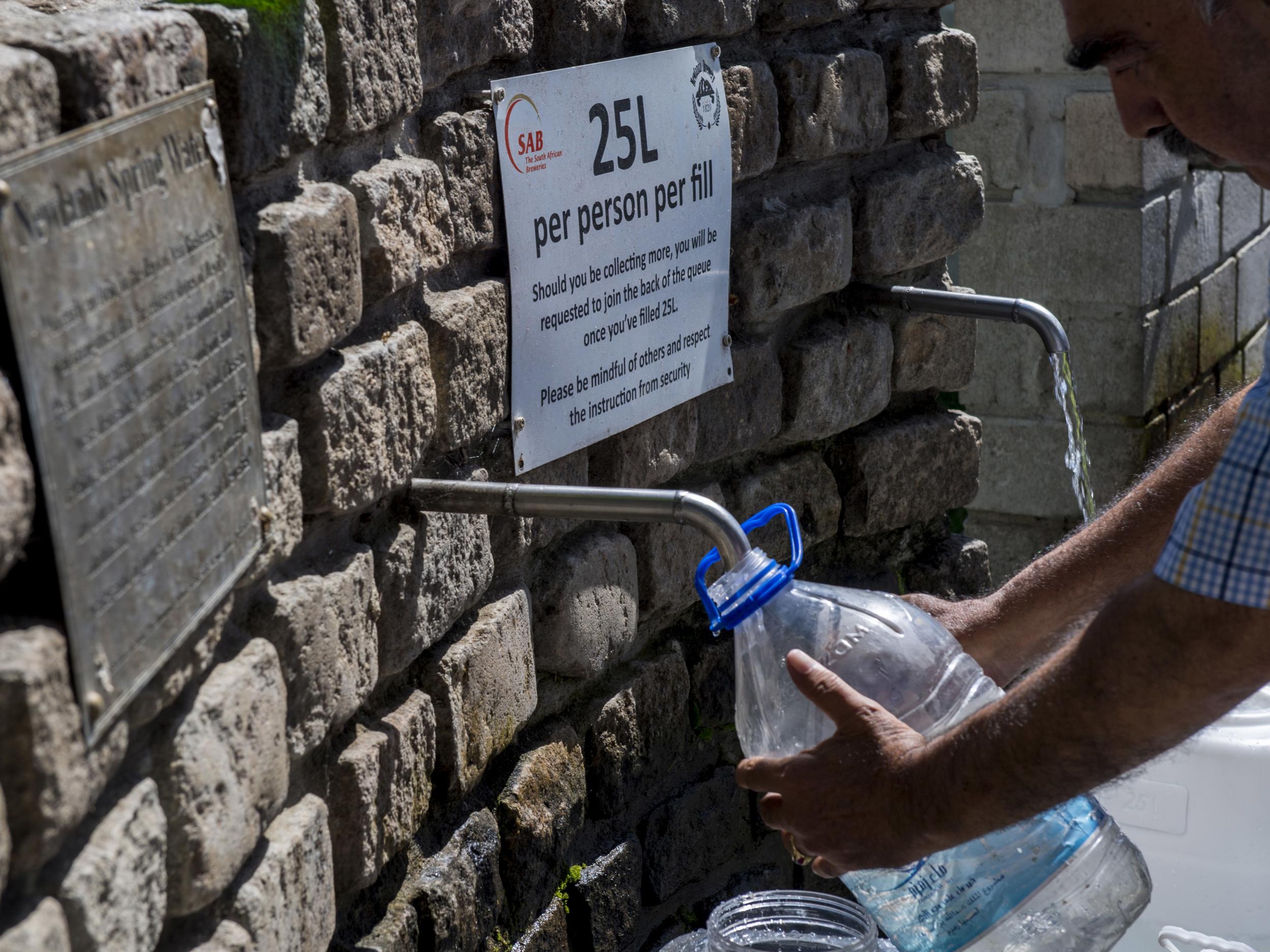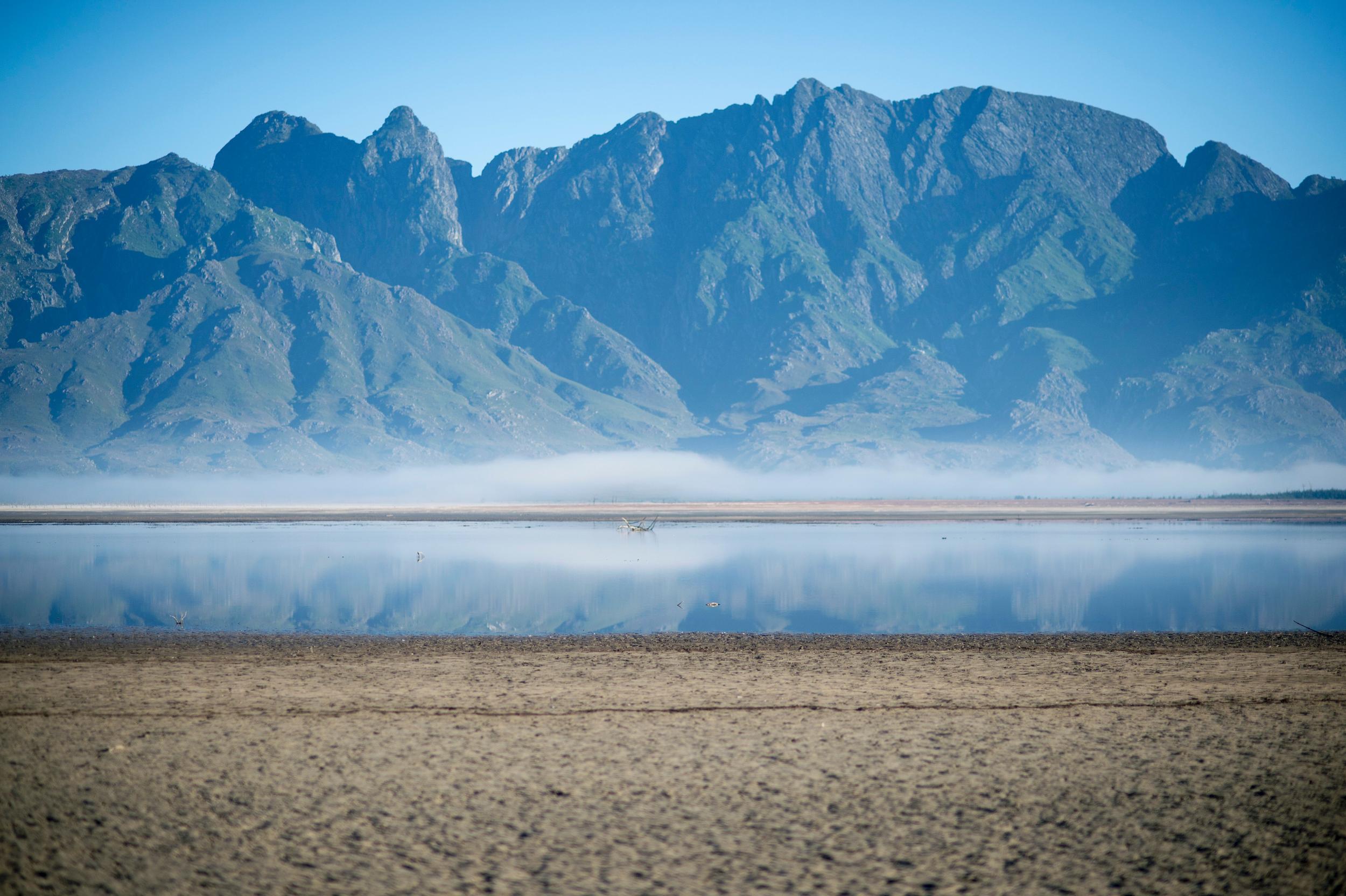Cape Town is approaching drought ‘Day Zero’, and climate change could be to blame
As water supplies run low in South African city, analysis by local scientists suggests global warming will make such ‘freak’ events commonplace in years to come
Your support helps us to tell the story
From reproductive rights to climate change to Big Tech, The Independent is on the ground when the story is developing. Whether it's investigating the financials of Elon Musk's pro-Trump PAC or producing our latest documentary, 'The A Word', which shines a light on the American women fighting for reproductive rights, we know how important it is to parse out the facts from the messaging.
At such a critical moment in US history, we need reporters on the ground. Your donation allows us to keep sending journalists to speak to both sides of the story.
The Independent is trusted by Americans across the entire political spectrum. And unlike many other quality news outlets, we choose not to lock Americans out of our reporting and analysis with paywalls. We believe quality journalism should be available to everyone, paid for by those who can afford it.
Your support makes all the difference.Cape Town is in the grip of a drought widely regarded as the worst in recorded history – one that could see it become the first city in the world to run out of water.
The city is edging closer to a day – known locally as “Day Zero” – when supplies are so low authorities will have to cut off water to three quarters of the population.
Far from being a hypothetical scenario, Day Zero has a set date. It is currently expected on 9 July.
The perfect storm of conditions that led to this drought, specifically three consecutive years of extremely low rainfall, would generally be expected no more than once in a millennium.
Predicting such “freak” events is tricky for scientists, but one thing is clear: climate change appears to have played a significant role in the Cape’s current misfortune, and it is set to make such events far more likely in the years to come.

Scientists have long suspected climate change has a hand in natural disasters such as droughts, flooding and hurricanes.
However, until relatively recently they have lacked sufficient data to support these suspicions.
While the link between a warming world and increased incidence of droughts may seem obvious, even here the complexity of the natural systems involved mean it can be difficult to draw direct links.
But in the Cape, where a cycle of wet and dry years is the natural course of things, there is evidence that global warming has caused the usual dry spell to intensify significantly.
“The effects of global warming are now interwoven with this natural variability,” says Professor Mark New, a climate researcher at the University of Cape Town.
Climate change contributes to drought both by changing rain levels and temperature.
“Droughts are a natural phenomenon in the Western Cape and the effect of climate changes is that it magnifies all weather events – both drought and flooding – and makes them less easy to predict,” says Dr Piotr Wolski, a hydrologist in the climate system analysis group at the University of Cape Town.
While it is difficult to draw firm conclusions while the disaster is still ongoing, “tentative preliminary analysis” by Professor New suggests that the once-in-a-millennium dry spell Cape Town is currently experiencing was made five times more likely by global warming.
What this means is that the 1C rise in average temperature over the past century in the region has increased the likelihood of such an event fivefold, compared to a scenario in which this warming had not taken place.

Across southern Africa more broadly, a 2016 analysis found that a slight shift towards lower rainfall in the region resulting from climate change is “likely”.
And while Cape Town may be the first city to run out of water due to climate change, experts predict it will not be the last.
Major hubs, including Mexico City, Sao Paulo and even London, could all be at risk of running out of water if rainfall is too low and sufficient preparatory measures are not taken.
According to the UN, climate change, population growth and consumption will likely result in two-thirds of the entire global population facing a lack of sufficient water resources by 2025.
As the Western Cape is expected to warm by around 0.25C over the next decade, the likelihood of drought there is expected to increase sevenfold.
Global warming will inevitably lead to extreme conditions becoming the new normal, and the scientists stress the importance of adaptation to this new reality.
“One positive outcome of the drought is that the general population has a better understanding of the linkages between climate and day-to-day life as well as an improved saving mentality and awareness of the value of water,” says Dr Wolski.
As the water crisis has increased in severity over the past two years, Cape Town has introduced ever more restrictive measures to bring down water use. Demand has been reduced from 1,200 million litres a day in 2015 to less than 600 million litres today.
Current restrictions in Cape Town require residents to use less than 50 litres of water each per day – compared to more than 300 litres used every day by the average American.

Meanwhile, work now must begin on long-term measures such as desalination plants that can keep the city adequately supplied with water during future droughts.
“On the supply side, the drought has accelerated research and investment into alternative water sources that will assist in making the system more resilient in the medium to long term,” says Dr Wolski.
Though the predictions made by climate change attribution scientists seem bleak, they do serve to transform the conversation about natural disasters.
Soenke Kreft, leader of Munich Climate Insurance Initiative at the United Nations University, has described attribution science as an important area of research with “potential to transform public narratives into more specific prevention measures of risks”.
While mitigation strategies can work as a sticking plaster for problems like droughts, they do not address the root of the problem – namely greenhouse gas emissions.
The worst predictions made about future droughts, in which the Mediterranean, south-west US and southern Africa begin to dry up by the end of the century, are all based on scenarios where carbon dioxide emissions do not fall.
By making the mental link between emissions and real-world outcomes such as droughts, scientists hope that both the public and policymakers can be convinced to take action.

Join our commenting forum
Join thought-provoking conversations, follow other Independent readers and see their replies
Comments